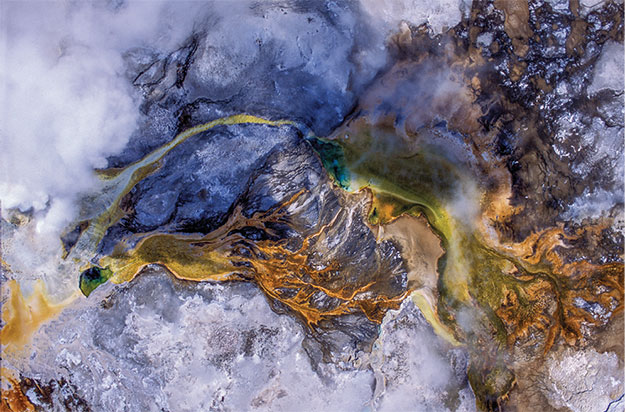Winter 2016: Energy Evolution
From carbon dioxide conversion to landfill mining, researchers at UTA are seeking viable alternative energy options.
Skip to content. Skip to main navigation.
From carbon dioxide conversion to landfill mining, researchers at UTA are seeking viable alternative energy options.
Found in everything from space shuttles to dental fillings, composite materials have thoroughly infiltrated modern society. But their potential is still greatly untapped, offering researchers ample opportunity for discovery.
Within the particle showers created at the Large Hadron Collider, answers to some of the universe’s mysteries are waiting.
Model systems like pigeons can help illuminate our own evolutionary and genomic history.
UT Arlington's tiny windmills are bringing renewable energy to a whole new scale.
The stability of our highways, pipelines, and even manholes is reaching a breaking point.
Scientists believe they have discovered a subatomic particle that is crucial to understanding the universe.
UT Arlington researchers unlock clues to the human body’s most mysterious and complex organ.
UT Arlington researchers probe the hidden world of microbes in search of renewable energy sources.
Wounded soldiers are benefiting from Robert Gatchel’s program that combines physical rehabilitation with treatment for post-traumatic stress disorder.
Tiny sensors implanted in the body show promise in combating acid reflux disease, pain and other health problems.
Nanotechnology researchers pursue hybrid silicon chips with life-saving potential.
Biomedical engineers combat diseases with procedures that are painless to patients.

An aerial view of runoff channels from the Clepsydra Geyser in Wyoming
At about 14,000 feet above sea level, stretching from New Mexico to Canada, the Rocky Mountains have long been a prominent, spectacular sight on the American landscape. But how did they get that way?
Earth and environmental sciences Assistant Professor Majie Fan is exploring that question. She recently received $485,627 from the National Science Foundation's Faculty Early Career Development (CAREER) Program to study the vertical shifts that formed the Rockies' present-day topography and how it influenced the regional climate.
"We know the region was warm and humid about 50 million years ago. Now, it's semi-arid," says Dr. Fan. "While local uplift and global cooling may have influenced the local climate, we are not clear which one played the dominant role."
Mountains are usually formed at continental margins, but the Rockies—the world's longest intracontinental mountain belt—lie inside the continent, far away from the margins.
"On the global level, we know, for example, that the Andes were formed on the west coast of South America, where the Nazca oceanic plate was subducted under the South America continental plate. The Himalayas, likewise, were formed at a plate boundary where India collided with Asia," explains Fan. "With the Rockies, we want to understand the mechanics of the plate tectonics that caused this type of intracontinental mountain belt on earth."
Over the next five years, Fan will use the CAREER grant to conduct field investigations and collect rock samples from the mountain range. She'll also work in Montana, North and South Dakota, Kansas, and Texas to estimate the elevation of the Rockies relative to the Great Plains.
Image by Tom Murphy/National Geographic Creative/Corbis